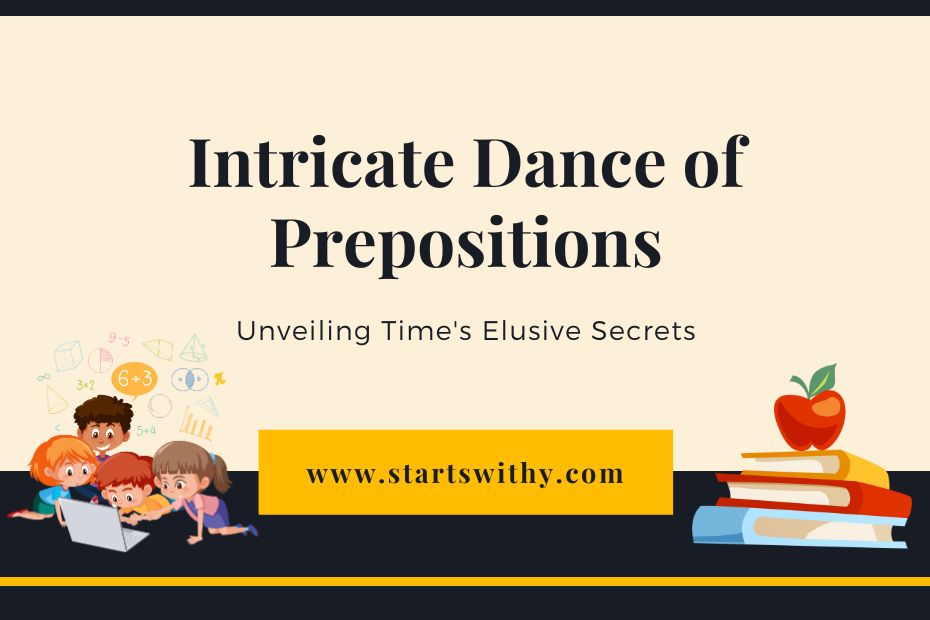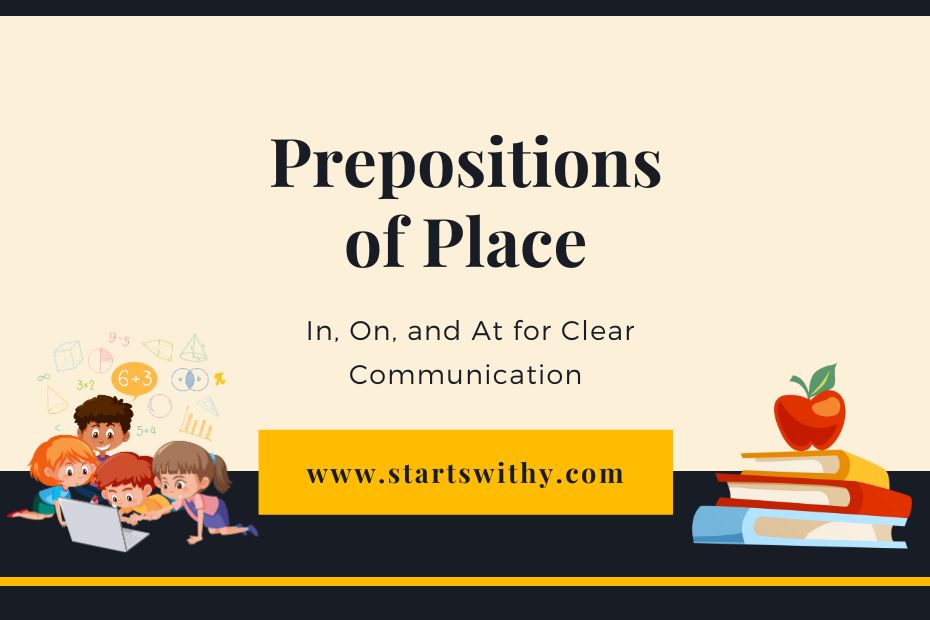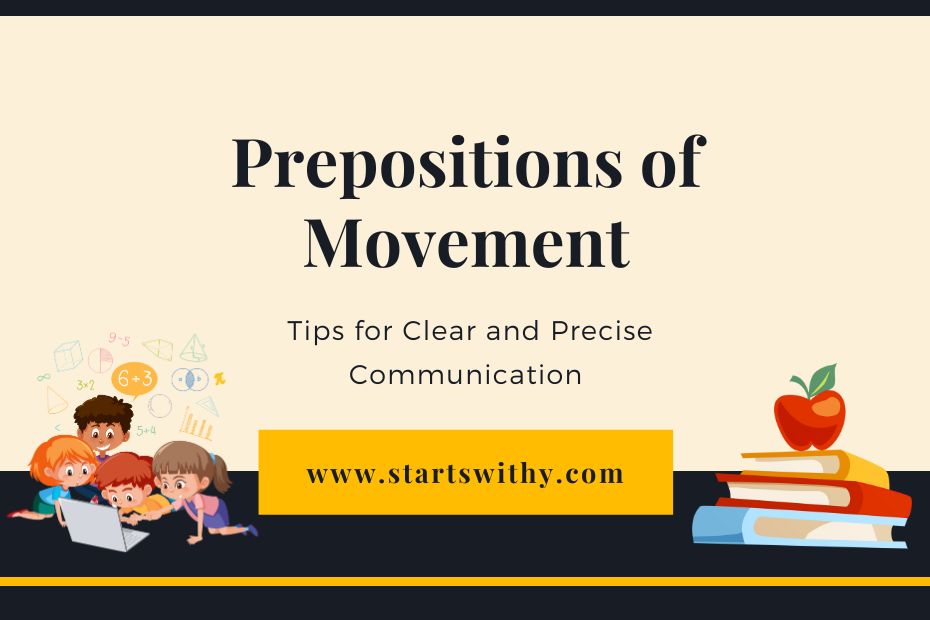Have you ever wondered how to correctly use prepositions of time in English? Whether you’re a native speaker or learning English as a second language, understanding these prepositions is essential for effective communication. In this article, I’ll guide you through the usage of three important prepositions of time: at, in, and on.
Prepositions can be tricky, but fear not! I’m here to simplify the rules and provide you with clear examples. We’ll start by exploring the basic time prepositions, such as at, in, and on, which are associated with specific time categories. From clock times to months and seasons, we’ll cover it all.
But that’s not all! We’ll also delve into functional time prepositions like after, before, during, and more. These prepositions help us express the duration, sequence, and timing of events. By the end of this article, you’ll have a solid understanding of how to use prepositions of time with confidence and precision.
Preposition of Time
When it comes to effective communication in English, understanding and using prepositions of time correctly is crucial. These prepositions help us to specify when an action takes place, whether it’s at a specific time, during a certain period, or within a particular timeframe. In this section, I will discuss three important prepositions of time: at, in, and on.
Preposition: “at”
The preposition “at” is used to denote specific clock times, exact times of day or night, and holiday periods. It helps to pinpoint a precise moment in time. Here are a few examples:
- At 5 PM: I’ll meet you at 5 PM.
- At night: I prefer to work at night.
- At Christmas: We exchange gifts at Christmas.
Preposition: “in”
The preposition “in” is associated with months, years, morning/afternoon/evening, seasons, centuries, and eras. It indicates a general time frame. Consider the following examples:
- In June: My birthday is in June.
- In the morning: I like to exercise in the morning.
- In the 20th century: Many scientific advancements were made in the 20th century.
Preposition: “on”
The preposition “on” is used for specific days, dates, holidays, weekends, and particular parts of the day (morning/afternoon/evening). It refers to a particular point in time. Take a look at these examples:
- On Sunday: Let’s go for a picnic on Sunday.
- On my birthday: I received many gifts on my birthday.
- On weekends: I like to relax on weekends.
Remember, knowing how to correctly use these prepositions of time is essential for clear and accurate communication. By understanding their specific usage, you can express the timing of events with confidence.
Next, I’ll delve into functional time prepositions that help express duration, sequence, and timing of events without a conclusion paragraph. Stay tuned!
Table: Prepositions of Time Usage
| Preposition | Usage |
|---|---|
| at | Clock times, exact times of day/night, holiday periods |
| in | Months, years, morning/afternoon/evening, seasons, centuries, eras |
| on |
Common Prepositions of Time
In
When using the preposition “in” for time, it refers to an event that will happen in the future or within a specific period of time. Here are a few examples of how “in” is used:
- Example 1: I will go to the gym in the afternoon.
- Example 2: She will arrive in May.
- Example 3: They are planning a vacation in two weeks.
On
The preposition “on” is used to specify an event that will happen on a specific date or day. Here are some examples of how “on” is used with time:
- Example 1: I have a meeting on Monday.
- Example 2: The concert starts on Friday.
- Example 3: We celebrate his birthday on July 4th.
At
The preposition “at” is used with a specific time to indicate when an event will happen. Here are some examples of how “at” is used:
- Example 1: We will meet at 8 PM.
- Example 2: I wake up at 6 AM every day.
- Example 3: The party starts at midnight.
Using these prepositions correctly will help you communicate effectively and accurately when referring to time. Remember, “in” is used for future events or within a specific period of time, “on” is used with specific dates or days, and “at” is used with specific times.
Prepositions of Time with Days of the Week
On Monday
When we want to mention a specific day of the week, we use the preposition “on.” For example, “on Monday” refers to a particular Monday in the calendar. Here are a few examples to illustrate the usage of “on” with different days of the week:
- I have a dentist appointment on Monday morning.
- They always go grocery shopping on Monday evenings.
- The school bus arrives at their stop on Monday afternoons.
On Tuesday
Similar to “on Monday,” we use the preposition “on” to indicate a specific day of the week, in this case, Tuesday. Here are some examples:
- The meeting with the client is scheduled on Tuesday afternoon.
- I usually have yoga class on Tuesday evenings.
- They organize team-building activities on Tuesday mornings.
On Wednesday
Continuing the pattern, “on Wednesday” is used to refer to a particular Wednesday in the calendar. Take a look at the following examples:
- The movie premiere is on Wednesday night.
- The seminar will be held on Wednesday afternoon.
- She always goes to the farmer’s market on Wednesday mornings.
Remember, when discussing specific days of the week, use the preposition “on” followed by the corresponding day.
Prepositions of Time with Months
In January
When it comes to talking about time using prepositions, the month of January is an important one. We use the preposition “in” to indicate a specific month, and January is no exception. Here are a few examples of how we use “in” with the month of January:
- In January, I always make a list of New Year’s resolutions.
- My birthday is in January, so I usually have a winter-themed celebration.
- Many people like to go on vacation in January to escape the cold weather.
In February
Moving on to the second month of the year, February, we continue to use the preposition “in” to talk about time. Here are some examples of using “in” with the month of February:
- In February, we celebrate Valentine’s Day and express our love to others.
- The winter Olympics usually take place in February every four years.
- It’s common to have a mid-winter break in schools in February.
In March
As we enter the month of March, the use of “in” with prepositions of time remains consistent. Here are a few examples of how we use “in” with the month of March:
- In March, the weather starts to get warmer as spring approaches.
- St. Patrick’s Day is celebrated in March, particularly on the 17th.
- Many people look forward to March because it marks the beginning of daylight saving time.
When talking about months, we use the preposition “in” to indicate a specific month. So, whether it’s discussing activities in January, special occasions in February, or the arrival of spring in March, using “in” with months helps us accurately convey time-related information.
Prepositions of Time with Specific Times
At 9 o’clock
When it comes to talking about specific times, the preposition “at” is used. For example, if I have a meeting at 9 o’clock, it means that the meeting starts precisely at that time.
Here are a few examples of how “at” is used with specific times:
- I have a meeting at 9 am.
- The shop closes at midnight.
- Jane went home at lunchtime.
At noon
We also use “at” to refer to specific hours like noon or midday. In this case, “at” is used to indicate that something happens at that particular hour of the day.
Here are a few examples of how “at” is used with specific times like noon:
- The meeting starts at noon on Monday.
- I left the party at midnight.
At midnight
Similarly, “at” is used to talk about specific times like midnight. It indicates that an event or action happens exactly at midnight.
Here are a few examples of how “at” is used with midnight:
- The shop will be closed from 7 pm until 8 am tomorrow.
- The cinema can hold up to 100 people.
Remember, when using “at” with specific times, we are referring to a precise hour or moment in time. It’s crucial to use the correct preposition to accurately convey the intended meaning.
Conclusion
Understanding the correct usage of prepositions of time is essential for effective communication in English. Throughout this article, we have explored the specific usage of the preposition “at” with specific times. By providing examples and explanations for using “at” with specific hours like 9 o’clock, noon, and midnight, we aim to equip readers with the knowledge and confidence to use prepositions of time accurately.
Remember, using the correct preposition of time can add clarity and precision to your conversations and writing. Whether it’s scheduling appointments, discussing events, or simply expressing the time of day, using “at” correctly will ensure that your message is understood correctly.
So, the next time you find yourself unsure about which preposition of time to use, remember the guidelines we’ve discussed in this article. With practice, you’ll become more comfortable and confident in using prepositions of time accurately, enhancing your overall English language proficiency.
Keep learning and practicing, and soon you’ll master the correct usage of prepositions of time in no time. Happy communicating!




